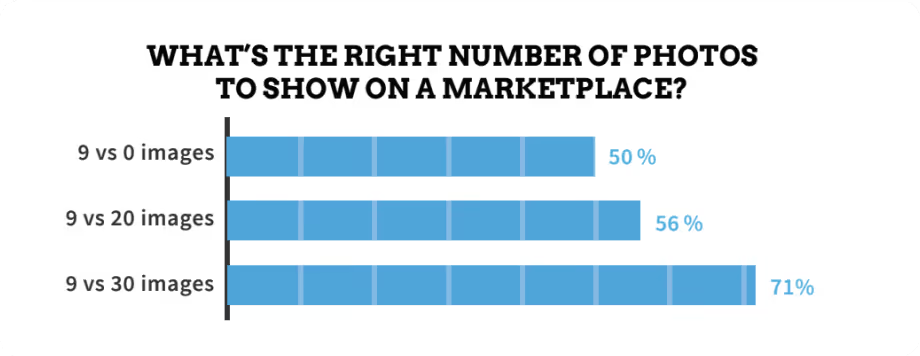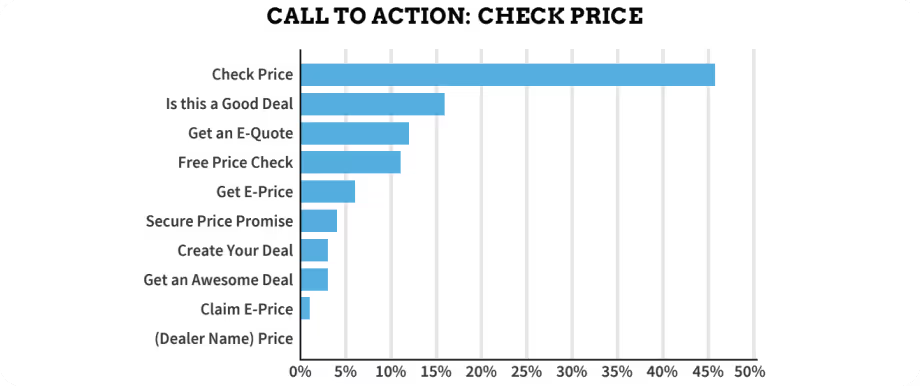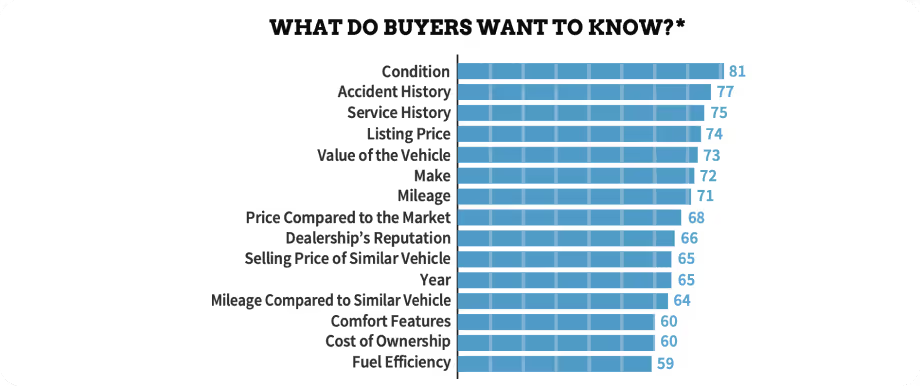In this article, we share key insights on selling a car online with a special emphasis on car photography. We combine research from various sources and our own experience to help you understand how to sell more cars and market them effectively online.
The following graph depicts the most common path to buying a used vehicle.

According to a study by CarStory in 2015, 86 percent of car customers start their research online. Today that number is certainly higher and mobile devices now dominate.
When selling cars online, your digital presence is everything. You might already have a website or a Facebook page, but an effective online presence is a complete, connected system that keeps you visible wherever buyers are searching.
In Norway, the most important places to publish your listings are Finn.no, your own dealership website, and social media. Since Finn.no holds a near-monopoly, every image and description there must look professional and trustworthy.
Focus on the channels that work best for you and do them exceptionally well. Quality beats quantity. Use clear keywords, maintain consistent visuals, and reply quickly to enquiries - speed builds trust.
In short: the best way to market cars online is to focus on a few high-performing platforms such as Finn.no and your own website. Consistency, clarity, and strong visuals drive engagement. Even dealerships in rural Norway can now compete effectively thanks to digital car-selling services like Autopix that make professional photography and listing management easy anywhere.
Knowing your target customer is one of the first steps to selling successfully online. It’s easy to assume that everyone shopping for a car is your audience, but motivations differ. In digital car sales, trust, convenience, and value perception drive every click.
Understanding why people buy helps you design listings, images, and copy that speak directly to their needs.
Several studies show that used-car buyers choose pre-owned vehicles mainly to save money and get a good deal. They look online for competitive offers and transparent pricing. The importance of fair, data-based pricing cannot be overstated.
According to CarStory, nearly all the top reasons for buying a used car relate to economics: saving money, getting the best features for the price, and avoiding depreciation. Buyers also value trustworthy sellers and vehicles that deliver great features without the new-car premium.
Understanding these motivations allows dealerships to build listings that highlight value, reliability, and honesty—three elements that quickly convert browsers into buyers.

Price, trust, and convenience form the core of every buying decision. High-quality photos create trust instantly.
Research from Cornell University and eBay (2012) showed a clear correlation between good images and higher sales. Finn.no found that 93 percent of buyers look at the pictures before anything else and spend an average of 1 minute 45 seconds on each ad, most of it on photos.
Professional-looking images communicate quality, help you stand out, and make customers feel confident that your dealership is reliable.
Too many photos can overwhelm buyers; too few may not build trust. Studies show that around nine to fifteen images perform best for lead submissions. At Autopix, we find 15–20 images per car ideal, sometimes up to 25 for special models.
Concentrate on the most important views — exterior, interior, dashboard, and unique features — and make sure the hero image is exceptional.

To know what photos to publish we must understand which features are valued the most by buyers. The following graph based on the study by CarStory illustrates what are the “must-haves” selected by potential buyers.

Always use original photos. Buyers expect authenticity and want to see the real vehicle. Listings that rely on stock photos convert at about half the rate of those with genuine images. Never edit out scratches or imperfections; accuracy builds credibility.
There’s a lot of talk about automated editing, but fully automated results can look artificial. Aim for realistic, high-quality images — tools like Autopix combine automation and human review to produce natural, professional results.
Your first photo is your headline. A clear, well-lit hero image showcasing your brand logo grabs attention and strengthens identity.
CarStory data shows listings with effective calls to action such as “Check Price” or “Get a Quote” achieve the highest engagement. Combine that with an appealing hero shot and your ad becomes instantly clickable.
The following are some examples of effective hero images:

Have a look at the following graph that illustrates various CTA that were tested by CarStory to check for engagement levels.

Used-car buyers value honesty. Present the car exactly as it is. Accurate representation prevents disappointment and increases the likelihood of a successful sale. It’s one of the most important best practices for selling a car online.

Put a human face behind your brand. Showing your sales team on your site and social channels builds emotional connection and trust. Humanised communication remains crucial — even in digital sales—and can make the difference between a bounce and a lead.
Professional editing elevates image quality without altering truth. You can sharpen, balance light, or remove backgrounds - but never modify the vehicle’s actual features.
Autopix uses hybrid editing technology that blends AI precision with human oversight, ensuring every photo looks crisp, consistent, and trustworthy. It’s one of the simplest ways to improve listing quality and sell more cars online.
In July 2022, legislators in Norway passed new regulations requiring all advertisers and influencers to label all images that have been retouched.
Look at this article to understand why complying with this law is essential.
Video helps potential buyers experience the product in motion and increases time spent on your listings.
A Renderforest survey found that video raised brand awareness by 70 percent, traffic by 51 percent, and sales by 34 percent.
Combine short walk-around clips with great still photography for the best results. Keep production simple - quality photos remain the main conversion driver.
3D or 360° views can attract more engagement — Auto.ru found 3D images were viewed 40 percent more than regular ones.
However, capturing them can be time-consuming and not all marketplaces support embedding. Prioritise excellent static photos first; add 360° visuals later to differentiate your listings.
Eliminate anything in your workflow that doesn’t add value. Decide whether to hire a photographer or use an app like Autopix to manage everything in-house.
Deciding whether you want to hire a photographer or do it yourself and whether you want to set up a studio or hire a space, can be daunting.
In addition to the photographer’s fee, there is a cost involved in having the car in the dealership waiting for a photographer to arrive and everything else that needs to happen before the car is marketed and sold. Savings for dealerships can be more than 68.5% so using an app to shoot your photos is well worth looking into.
Plan your shots, define required angles, and approve images immediately after capture to avoid delays. Use a photo-guide system to ensure consistency — especially across multiple dealerships or when team members rotate.
Digital Asset Management (DAM) stores and shares your images securely, improves team coordination, and speeds up communication. Autopix offers 90-day storage with simple approval and download tools, keeping everything organised and accessible.
When choosing a vendor, focus on quality control, not just low price. A partner who manages the full post-production process ensures your images remain consistent and brand-aligned.
Photos grab attention, but copy convinces. Your text should answer the questions buyers actually ask: condition, accident history, service records, and price.
High-quality copy gives the impression of professionalism and builds credibility. Together, strong words and strong visuals create the confidence buyers need to take action.
There are a few main things that buyers want to know about the car, so it is important to make sure you’re covering these. Have a look at the following graph. (Image reference: carstory.com)

The chart above shows the 15 most important details according to the respondents of the study by CarStory. Condition of the vehicle, accident history, service history, listing price and value of the vehicle turned out to be the top points.
The automotive market evolves quickly. Track buyer behaviour, platform performance, and seasonal demand to stay ahead. Analytics help you understand what vehicles sell faster and where to invest your marketing energy.
Staying informed about trends allows dealerships to market cars online more effectively and continuously improve conversion rates.
To sell more cars online, focus on three pillars: price, trust, and convenience. Professional photos build trust, fair pricing attracts clicks, and responsive communication seals the deal.
Whether you’re based in Oslo or operating in rural Norway, Autopix helps dealerships create professional, consistent visuals that attract more buyers and increase conversions across every platform.